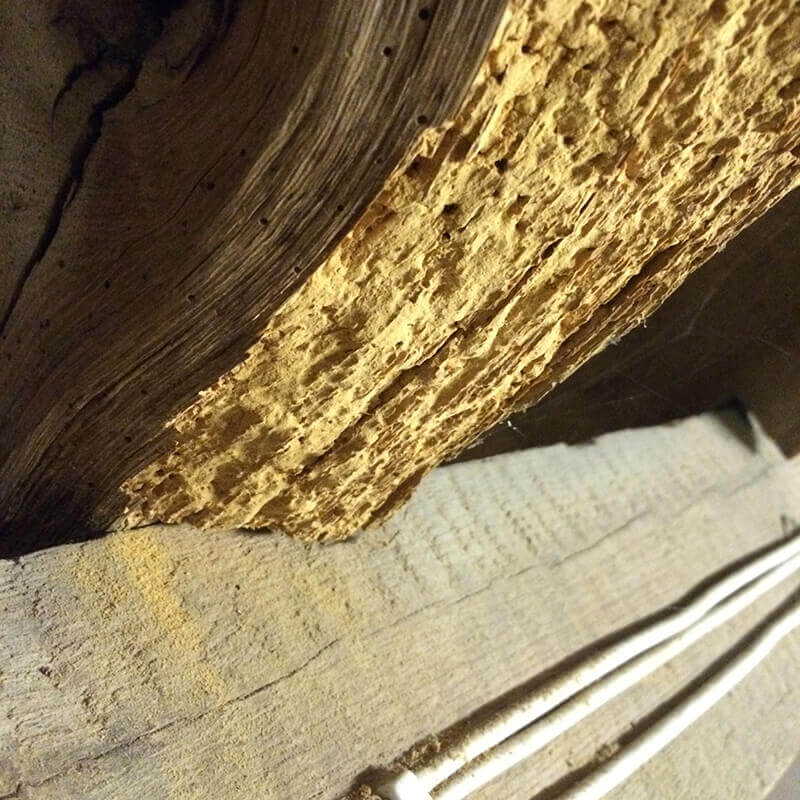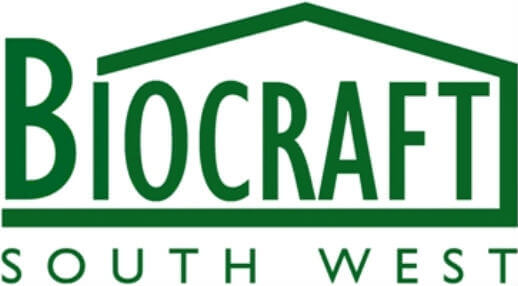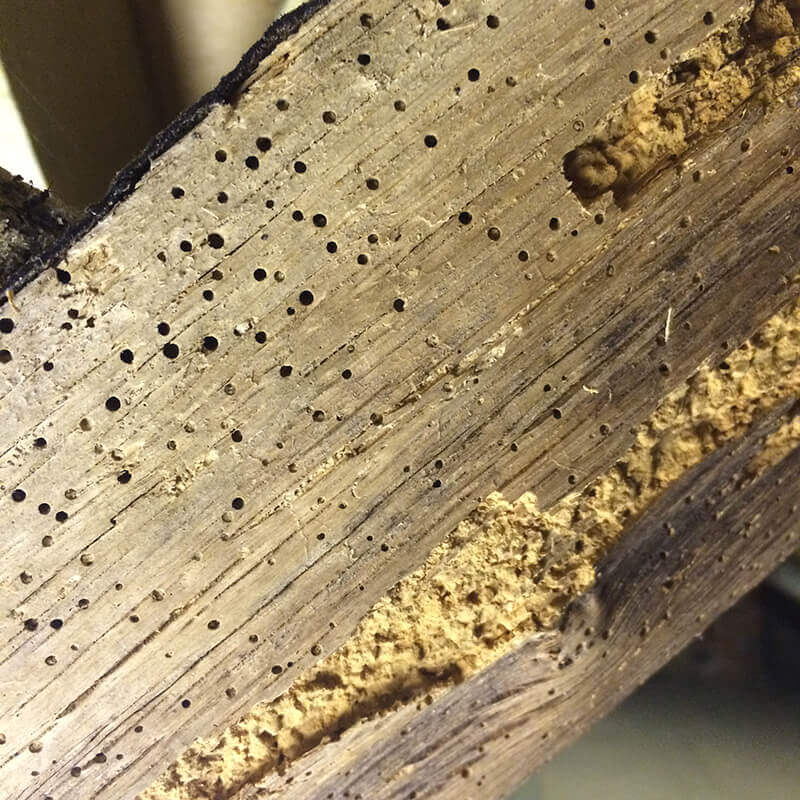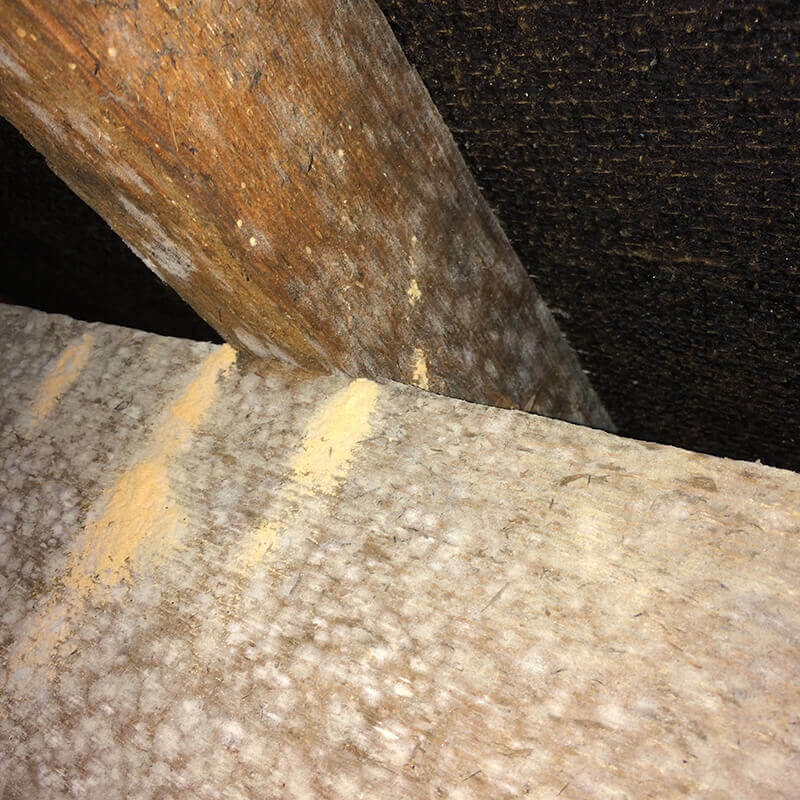
Woodworm Cheltenham Specialists
There are many types of insects that use wood as a habitat. Some insects are restricted to the forest, others can live in timber that has been felled and incorporated into the home. The most commonly known wood boring insect is known as Woodworm, and pre-purchase reports frequently call for woodworm Cheltenham surveys to be conducted and woodworm treatment carried out if required.
Woodworm refers to the larvae of the wood boring beetle Anobium Punctatum, commonly known as Common Furniture Beetle. The larvae lives in the wood for several years, consuming the wood before pupating; the adult woodworm beetle then emerges from the wood, leaving the tell tale signs of frass trails and emergence holes. Woodworm attacks softwoods and the sapwood for European hardwood; however woodworm require wood to be above a certain moisture content to survive.
Common furniture beetle is the most common wood boring insect in the UK. Many older properties will show some evidence (1-2mm exit holes) of woodworm activity in floor boards, joists, rafters etc. although whether this is a current active attack should be determined before any chemical treatment is performed.


